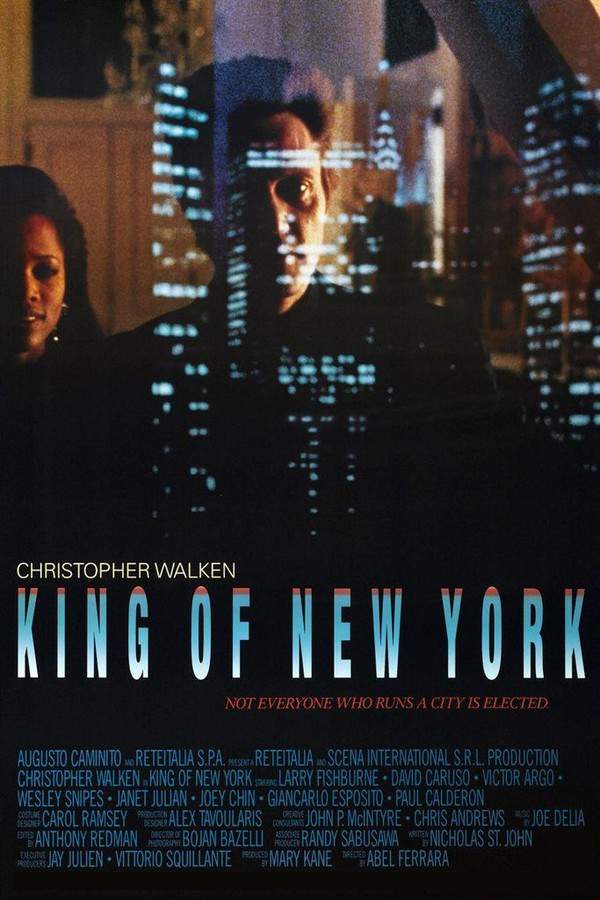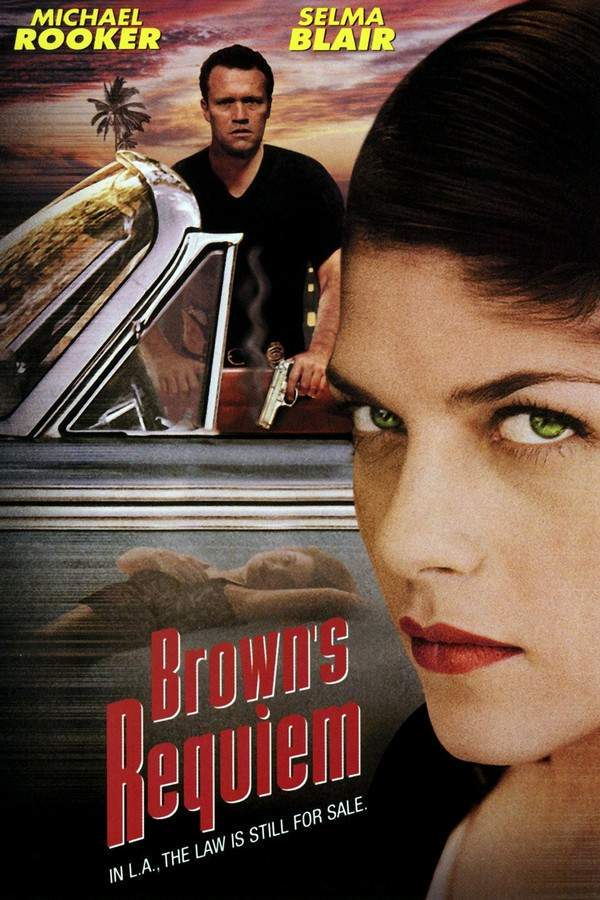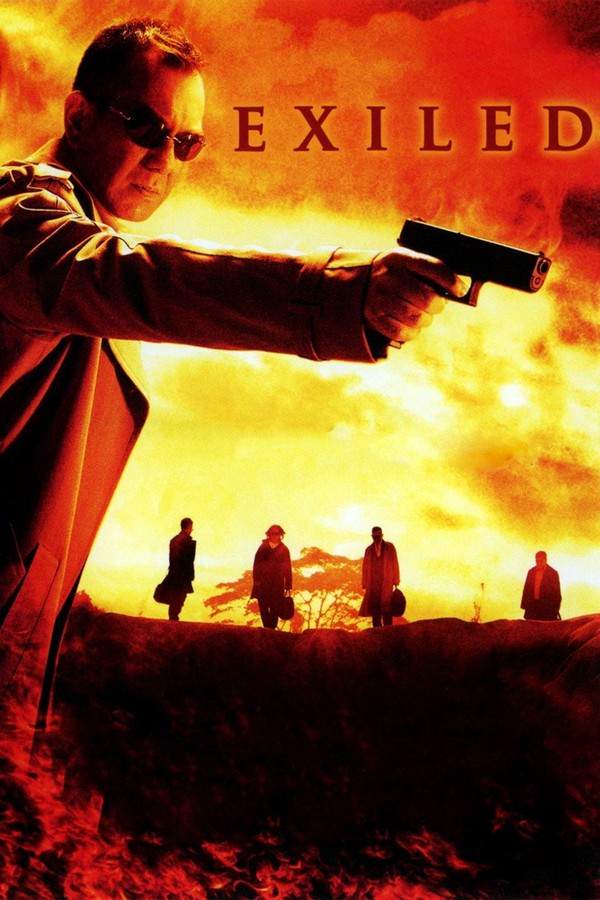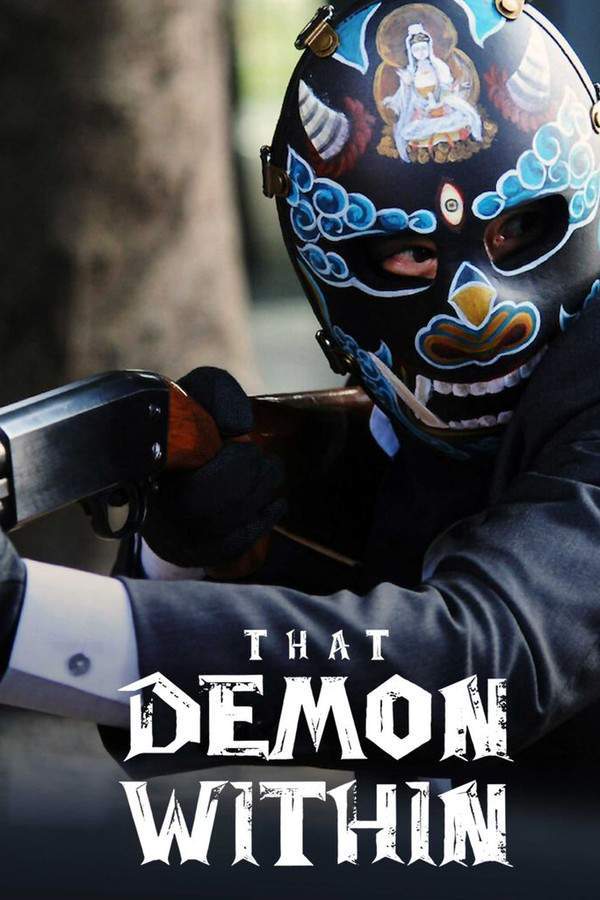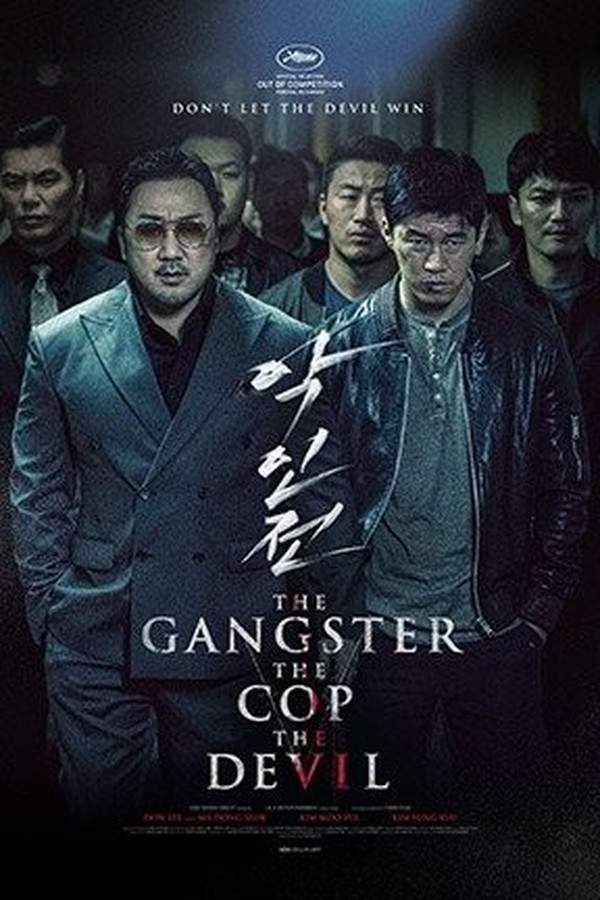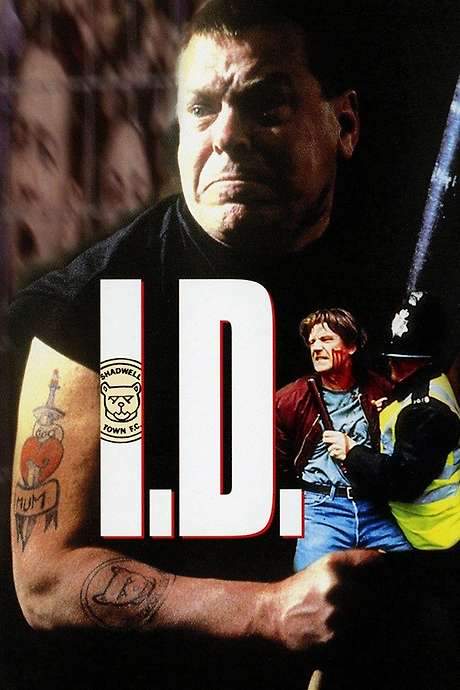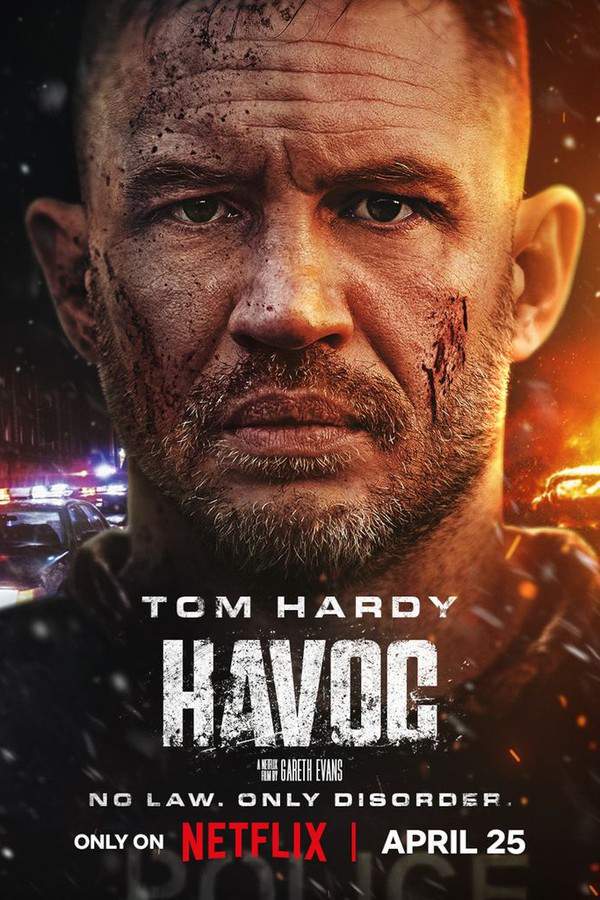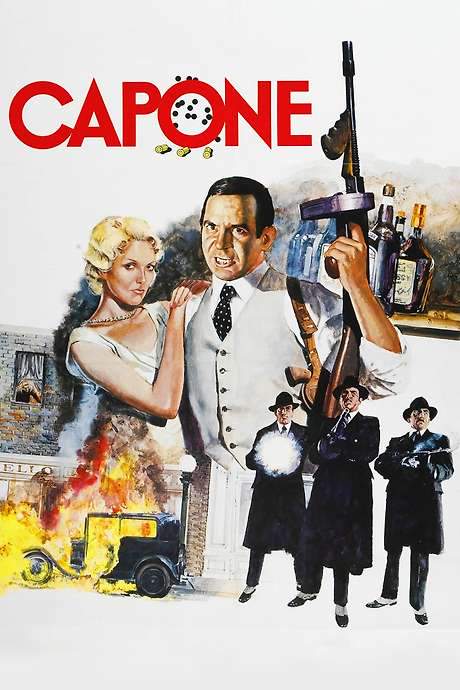
Capone
Year: 1975
Runtime: 101 mins
Language: English
Director: Steve Carver
Young Al Capone draws the attention of Johnny Torrio, a visiting Chicago gangster. Torrio brings him to Illinois to oversee a Prohibition‑era alcohol racket during the 1920s. Capone rapidly ascends Torrio’s crew, eventually seizing control, eliminating rivals, rigging elections and amassing wealth, while courting the principled Iris Crawford.
Warning: spoilers below!
Haven’t seen Capone yet? This summary contains major spoilers. Bookmark the page, watch the movie, and come back for the full breakdown. If you're ready, scroll on and relive the story!
Capone (1975) – Full Plot Summary & Ending Explained
Read the complete plot breakdown of Capone (1975), including all key story events, major twists, and the ending explained in detail. Discover what really happened—and what it all means.
The film traces the rise and fall of Chicago mob boss Capone, portrayed by Ben Gazzara, whose iron grip over the Prohibition-era city shapes an underworld that thrives on fear, loyalty, and calculated violence. From a young streetwise opportunist to the most feared enforcer in town, Capone’s arc unfolds alongside a roiling cast of gangsters, politicians, and lawmen, all entangled in a deadly game of power.
In the opening sequence, a young Capone earns his scars and his reputation after a dramatic confrontation in a Brooklyn alley, a moment that foreshadows the ruthlessness he will bring to his criminal ascent. The encounter sets the stage for an alliance with the city’s looming powers and introduces the men who will become pivotal to his story, including Harry Guardino as Johnny Torrio, whose cool command and strategic mind guide Capone toward bigger schemes. Capone’s early years are marked by a quick pivot from a small-time hoodlum to a trusted enforcer who earns the respect of seasoned racketeers, one of whom is John Orchard as the calculating Dion O’Banion, a rival whose turf wars will ignite a ruthless battle for dominance.
The narrative accelerates as Prohibition reshapes the city’s criminal landscape. Torrio and his allies, including a dancer and barmaid named Iris Crawford, played by Susan Blakely, recognize the opportunity to bootleg and profit on a scale never seen before. The pair recruit Capone to Chicago to enforce their new order, and the decision to remove Jim Colosimo—known as Big Jim and portrayed by Frank Campanella—becomes a turning point. In a chilling act of violence, the young Capone quietly executes the boss in the back of a restaurant, an event that marks the brutal birth of the Chicago Outfit.
As the Outfit establishes its foothold, the film follows the deadly turf wars that define the era. A pivotal shootout in Joliet demonstrates Capone’s instinct for territory: the North Side under O’Banion, the South Side under Spike O’Donnell, and the Little Italy domain claimed by the Genna brothers, with Capone and his crew consolidating power in the Loop. This period features key figures such as Martin Kove as Pete Gusenberg and Robert Phillips as Bugs Moran, whose feuds escalate with brutal precision. The coalition and conflict among gangsters are mirrored by the ambitious, corrupt officials who attempt to manage the chaos, including George Chandler as District Attorney Robert E. Crowe and Royal Dano as Anton J. Cermak, the mayor who becomes a political foil to Capone’s influence.
The plot intensifies with a series of retaliatory strikes and strategic killings. Capone’s circle tightens as alliances shift after the murder of O’Banion and the subsequent hits on rival families. The iron will of Capone is shown in moments of calculated compromise, as when the Outfit’s reach is temporarily tempered by political pressure. Yet Capone remains impervious to the law, boasting of his untouchable position as long as corruption shields him. The film doesn’t shy away from Iris Crawford’s fate, a personal blow that deepens Capone’s resolve and his capacity for vengeance, a sentiment that drives his relationship with his most trusted enforcer, Frank Nitti, played by Sylvester Stallone. Nitti’s loyalty and ambition become instrumental as Capone navigates a city ready to turn on him when convenient.
The narrative crescendos as the city’s elected leadership seeks to rein in Capone’s violence. The new tone is set by John Finnegan as a NY Police Lt. in some scenes, and by the public pressure that culminates in a dramatic showdown with the city’s power brokers, including George Chandler again as Crowe, who threatens to indict Capone for the murder of government-leaning targets. In this tense climate, Capone’s men execute a sweeping, brutal assault on Moran’s organization—an act that lays bare the extent to which Capone will go to consolidate power, even as the city’s political class grows bolder in turning against him.
The legal portion of Capone’s saga unfolds with his high-profile tax evasion trial. The relentless pursuit by federal authorities culminates in a lengthy legal process that ultimately results in Capone’s conviction, not for murder or bootlegging, but for multiple counts of tax evasion. The judge’s sentence sends him to Alcatraz for eleven years, a punishment that signals the end of an era for the Chicago Outfit’s hegemony and a shift in the city’s criminal balance of power.
Health and time take their toll. By the late 1930s, Capone’s strength has waned, and doctors diagnose advanced syphilis, a disease that erodes his mind and memory. The film portrays the fragility of a once-formidable figure as his body betrays him, triggering riots and a further erosion of the control he once wielded with brutal efficiency. Capone’s decline continues in Florida, where his trusted ally Nitti—still by his side in these final chapters—wields a candid, almost merciless appraisal of Capone’s flaws: the man who ruled through fear is now a faded echo of his former self, haunted by memories of his past decisiveness and the empire it built.
In the end, Capone dies several years after his release from isolation, a life spent in bedlam and isolation, a stark contrast to the power he once commanded. The closing chapter focuses on the complex relationship between Capone and Nitti, with Nitti’s guarded assessment of Capone’s legacy underscoring the cost of leadership in the criminal underworld: ambition, loyalty, and a willingness to kill for power often leave a bitter wake. The film closes on a quiet, reflective note about how a man once at the center of a violent empire can fade into memory, leaving behind a city forever altered by his presence and the violence that defined an era.
The story is a careful, unflinching look at how one man’s appetite for control can reshape a city, drawing in real historical figures and the fictionalized human drama that surrounds them. It remains a portrait of charisma and brutality, of political protection and personal loss, and of the slow, inexorable march from the heights of power to a solitary, unmoored end.
Last Updated: October 09, 2025 at 11:25
Explore Movie Threads
Discover curated groups of movies connected by mood, themes, and story style. Browse collections built around emotion, atmosphere, and narrative focus to easily find films that match what you feel like watching right now.
Grim Crime Lord Sagas like Capone
Chroncling the brutal ascent and inevitable, lonely downfall of a criminal kingpin.If you liked the intense, tragic story of Al Capone's rise and fall, explore more movies like it. This collection features similar gritty crime dramas about ambitious gangsters who build empires only to face a bleak and inevitable downfall, perfect for fans of heavy, character-driven organized crime stories.
Narrative Summary
The narrative typically follows a linear or biographical path, tracing the protagonist's climb from obscurity to immense power. This rise is often fueled by ruthless tactics, strategic violence, and political corruption. The second half of the story focuses on the empire's instability, internal betrayals, and the protagonist's physical or moral collapse, culminating in a sad or bleak ending that underscores the futility of their quest for power.
Why These Movies?
Movies in this thread are united by their focus on the tragic arc of a single powerful figure within a criminal underworld. They share a dark tone, high intensity from constant power struggles, and a heavy emotional weight stemming from the protagonist's moral and physical decay. The pacing is often fast, driven by a relentless series of strategic moves and violent conflicts.
Intense Stories of Moral Decay like Capone
Stories where the pursuit of power corrupts absolutely, leading to a dark end.For viewers who appreciated the dark and heavy tone of Capone, this section collects movies with a similar vibe. Discover films that explore the corrosive nature of power, featuring fast-paced narratives, high-stakes violence, and characters whose ambitions lead them into profound moral decay, resulting in a somber conclusion.
Narrative Summary
These stories often depict a protagonist's gradual or rapid loss of ethical boundaries in their quest for dominance. The plot is driven by escalating conflicts, betrayals, and acts of violence that erode the character's humanity. The central conflict is internal as much as external, charting a psychological descent into ruthlessness that culminates in a hollow victory or a complete personal downfall.
Why These Movies?
These films are grouped by their shared exploration of corruption and the heavy price of power. They create a cohesive experience through a consistently dark tone, high emotional intensity, and fast pacing that mirrors the protagonist's chaotic ascent. The unifying element is the focus on the psychological and moral unraveling of a central figure.
Unlock the Full Story of Capone
Don't stop at just watching — explore Capone in full detail. From the complete plot summary and scene-by-scene timeline to character breakdowns, thematic analysis, and a deep dive into the ending — every page helps you truly understand what Capone is all about. Plus, discover what's next after the movie.
Capone Timeline
Track the full timeline of Capone with every major event arranged chronologically. Perfect for decoding non-linear storytelling, flashbacks, or parallel narratives with a clear scene-by-scene breakdown.

Characters, Settings & Themes in Capone
Discover the characters, locations, and core themes that shape Capone. Get insights into symbolic elements, setting significance, and deeper narrative meaning — ideal for thematic analysis and movie breakdowns.

More About Capone
Visit What's After the Movie to explore more about Capone: box office results, cast and crew info, production details, post-credit scenes, and external links — all in one place for movie fans and researchers.







